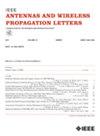Evaluation of Spiral Monopole Antenna Arrays for Human Brain Imaging at 7 Tesla
IF 4.8
2区 计算机科学
Q2 ENGINEERING, ELECTRICAL & ELECTRONIC
引用次数: 0
Abstract
Ultra-high field (UHF, ≥7 Tesla (T)) magnetic resonance imaging (MRI) is widely adopted for its ability to achieve high signal-to-noise ratio (SNR) for high-resolution imaging. However, the limitation of UHF is its nonuniform field distribution, which poses a challenge for clinical applications. Based on the evaluations of monopole antenna arrays (MAs), we have acquired uniform human brain images with high transmit and receive performance. However, they have limitations in terms of relatively longitudinal short coverage for human whole-brain imaging. To address this, we have developed a newly designed MA with floating shields. This design shows superior performance in terms of the extension of the longitudinal coverage. However, it still does not provide sufficient uniform images for clinical usages. Therefore, we aim to improve field uniformity by designing and fabricating monopole antennas with spiral antenna concept. In this study, we developed three types of 8-channel MAs: a conventional MA, an extended spiral monopole array (ESMA) without individual shielding, and an ESMA with individual shielding (ESMAS). Experimental evaluations confirmed the superior performance of the ESMAS, producing more uniform transmit and receive profiles. High-resolution brain imaging was successfully obtained at 7 T using the ESMAS.螺旋单极天线阵列用于7特斯拉人脑成像的评价
超高场(UHF,≥7特斯拉(T))磁共振成像(MRI)因其能够实现高信噪比(SNR)的高分辨率成像而被广泛采用。然而,超高频的局限性在于它的场分布不均匀,这给临床应用带来了挑战。通过对单极天线阵列(MAs)的评估,我们获得了具有高发射和接收性能的均匀的人脑图像。然而,就人类全脑成像的相对纵向短覆盖范围而言,它们存在局限性。为了解决这个问题,我们开发了一种带有浮动护盾的新设计MA。这种设计在纵向覆盖范围的扩展方面表现出优越的性能。然而,它仍然不能为临床应用提供足够统一的图像。因此,我们的目标是利用螺旋天线的概念设计和制造单极子天线,以改善场均匀性。在这项研究中,我们开发了三种类型的8通道MAs:传统MA,无单独屏蔽的扩展螺旋单极子阵列(ESMA)和具有单独屏蔽的ESMA (ESMAS)。实验评估证实了ESMAS的优越性能,产生了更均匀的发射和接收剖面。使用ESMAS在7 T时成功获得高分辨率脑成像。
本文章由计算机程序翻译,如有差异,请以英文原文为准。
求助全文
约1分钟内获得全文
求助全文
来源期刊
CiteScore
8.00
自引率
9.50%
发文量
529
审稿时长
1.0 months
期刊介绍:
IEEE Antennas and Wireless Propagation Letters (AWP Letters) is devoted to the rapid electronic publication of short manuscripts in the technical areas of Antennas and Wireless Propagation. These are areas of competence for the IEEE Antennas and Propagation Society (AP-S). AWPL aims to be one of the "fastest" journals among IEEE publications. This means that for papers that are eventually accepted, it is intended that an author may expect his or her paper to appear in IEEE Xplore, on average, around two months after submission.

 求助内容:
求助内容: 应助结果提醒方式:
应助结果提醒方式:


